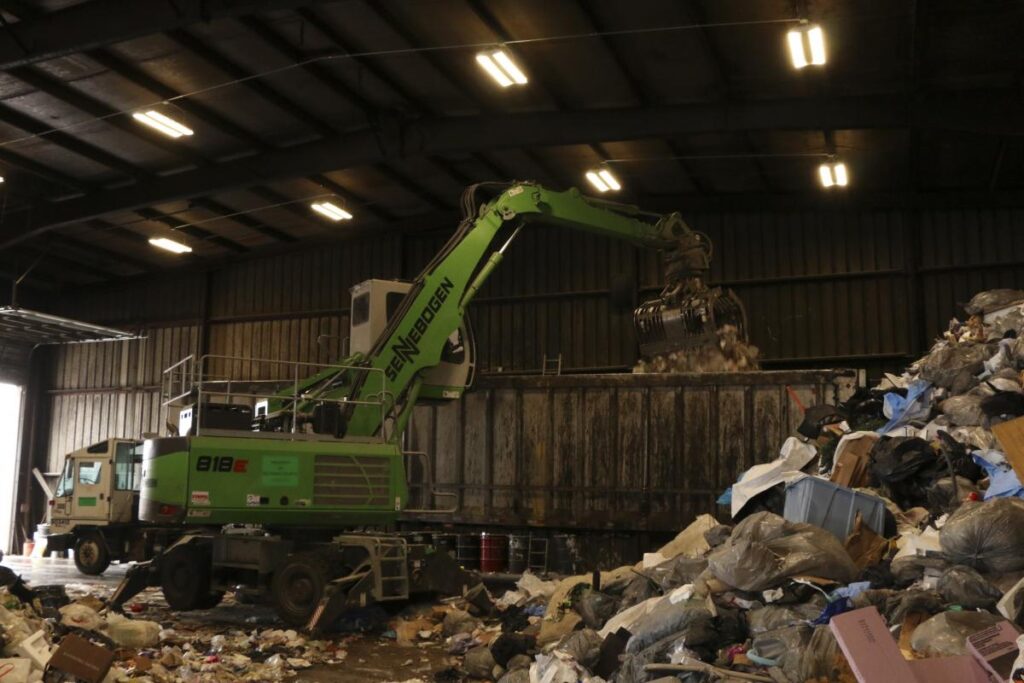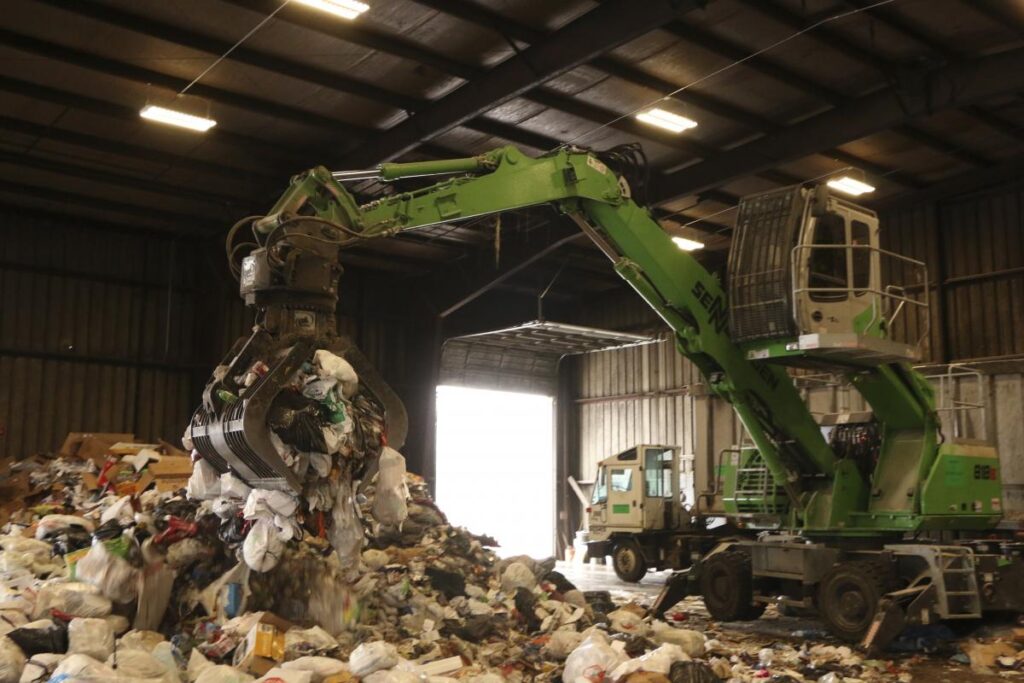
The sliding door and the permanent catwalk and guardrail make getting in and out of the Maxcab easy and safe.
Bemidji, MN – While “decision by committee” is a daunting prospect for many equipment purchasers, a coalition of municipal solid waste facilities in northern Minnesota found that a team effort achieved the best result.
The regional distributor for SENNEBOGEN equipment, Road Machinery & Supplies Co. (RMS), recently delivered 818 M “E” purpose-built material handlers to waste handling facilities in Beltrami and Polk Counties. Beltrami and Polk, along with four other adjacent counties, are part of a local coalition who are taking a shared approach to managing their solid waste needs.
Brian Olson, the Solid Waste Coordinator for Beltrami County, explained the strategy. “We originally came together to apply for grant money to upgrade our equipment. Knowing that we would need multiple machines, we coordinated our programs as an approach to leverage better pricing and lower costs for ongoing maintenance.”
“We invited several manufacturers to come up here and give us their spiel. We wanted to make sure we were getting the right machine for the purpose we have. We had our machine operators, our mechanics and our administrators all take part in evaluating the proposals. And that’s how SENNEBOGEN came out on top.”
Multi-county upgrade program
Located in Bemidji, MN, where one of Beltrami’s two transfer facilities is located, Olson has been overseeing the upgrade process from its inception, since he joined the operation about 18 months ago. Beltrami County generates 30,000 tons of solid waste per year. Each County in the coalition operates its own local transfer stations, targeting 35% recovery of recyclable material. All of the transfer stations truck their sorted material to a multi-stage facility in Polk County, where it’s processed through a MRF, an energy-from-waste plant and the Polk landfill.
One of the SENNEBOGEN machines is sorting material at Bemidji, while the other will be located at the Polk MRF site.

With limit stop installed to suit the ceiling height, it’s easy to see right into the trailer without worrying about the boom and stick.
Flexible configuration
While Olson expects to see more members of the coalition purchasing SENNEBOGEN machines, he notes that the 818s delivered to date are not quite identical. “One factor in SENNEBOGEN’s favor was that each machine is designed specifically for the facility that it will work in. We had the CAD drawings to be sure the boom & stick were the right lengths.”
Beltrami County acquired the Bemidji transfer station by purchasing it from the previous operator. New material handlers were part of the plan for upgrading the complete facility. “We decided to replace the rubber-tired machine which was equipped with a fixed cab that came with the assets with a new purpose built material handler including a hydraulic elevating cab for better visibility and safety on the floor. We wanted rubber-tired units because they are running on a concrete floor here and running indoors.”
“One of the big things that sold me was the ease of maintenance on the SENNEBOGEN 818,” he continues. “We can do all the servicing from the ground. The usual wear parts and hoses are all very accessible. You know any machine will go down. Being able to fix it quickly is big in our business. Waste never stops!”
Safety for staff & facility
Olson and his group were further impressed by the 818’s safety features. “I’m glad you can walk out onto a platform from the cab, you don’t have to crawl up into the machine. We also equipped it with a front protection guard and a guard on the skylight; installed boom limit switches to suit our ceiling height and added the lighting package. Environmental factors were important in our decision, too – especially noise. You can hardly hear this 818 run, so that was another positive point in its favor.”
The new machine also protects itself from stresses on the tipping floor. “The 818 has an optional boom float capability. With our old machine, the pressure of grabbing garbage would shear off pins in the grapple. With this float feature, you can pick without putting pressure on the grapple or the floor.”
With just 200 hours on it, the 818 M has already proven its merit. RMS provided staff to conduct initial operator training as well as maintenance orientation for the mechanics on-site. “Our operator has been running a material handler for years. There wasn’t much of a learning curve, he just went in and got to work.”

